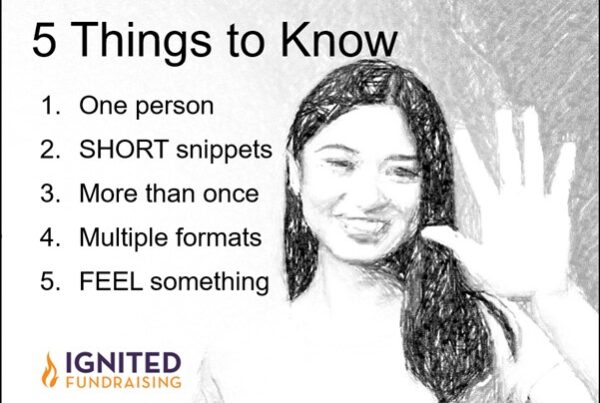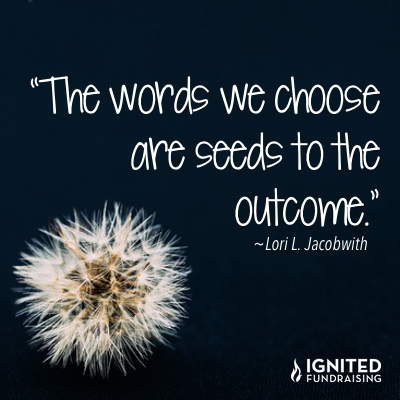
Fundraising success comes from effective communication. I’ve watched organization after another struggle with engaging their supporters because they are often using communication that misses the mark.
Recently I spoke with Ann, from a mid-size organization serving youth. We talked about their nonprofit enewsletter and whether or not it was effective.
“Our click-through rates are low and I know we are missing something,” she said.
So we took a look at some of the past issues. What we found is all of the newsletter’s articles were either thanking others for support or inviting readers to an event.
Nowhere was there a message about why the dollars raised at an event were important. There were no mission moment examples of how one youth has a better life because of contributions from the community.
In articles inviting readers to attend an event it was not clear what would happen for the youth if people DID attend. Here’s an example of language they could have used to entice people to attend:
Your attendance at this event will help raise $15,000 — Enough to allow 300 low-income, troubled youth ages 6 – 16 to feel safe and have the fun a child deserves to have.
Here’s one example of a headline from the newsletter:
Cloverfield Bank Sponsors Youth Day
The article went on to tell readers about all the fun that was had at a recent youth event. The event was in the past so I couldn’t attend but the newsletter used a good amount of space to acknowledge the sponsor. And I wasn’t clear WHY the youth needed this event in their lives.
If you want the story to be: We don’t need anymore than we raised that day, then the headline is fine. If you’d like to raise MORE after the event read on for suggestions:
Here’s what I suggest your headlines and articles do:
1. Craft a subject line or headline that makes the reader want more information.
The subject line for the newsletter is as important at the titles of each article. Without a good subject line, your reader might not even click to open your newsletter.
2. Tell readers something about the outcome of what you do.
3. Briefly explain why your organization needed the money.
Also, let people know if you need more for future programs, youth days, or whatever event was sponsored.
4. In the body of the article give acknowledgement to the sponsor.
Bold their name a few times. Frankly, the sponsor doesn’t often care if they are listed in the headline. They want to know their work mattered and made a difference.
Here is a re-write of the headline with a short article that conveys some “meat” about why this event was held.
$10,000 Allows Youth Experience of a Lifetime.

For six hours, 75 troubled youth, ages six to sixteen, got to forget their worries and played the way children are meant to at the Cloverfield Bank Youth Day on June 16.
Surrounded by caring adults, youth like Dashawn, James, and Kendrick (pictured) were able to laugh, run, cook, and eat two healthy meals while creating memories that will last a lifetime. For a few hours these kids were free from peer pressure and the struggles of living in low-income neighborhoods.
In addition to $10,000, Cloverfield Bank provided 80 volunteers who participated in the amazing Youth Day experience. Each volunteer was paired one-on-one with a child to teach them a new skill or simply mentor them for a few hours.
This year we have the resources to hold 3 of 6 planned Youth Days. More than 500 kids who would normally participate in these fun, safe, day-long events will not be able to due to funding challenges this year. There is still time to schedule the remaining 3 Youth Days if your company is interested in sponsoring an event please contact Ann@Youthdayevents.org for more information.
Our sincere thanks to Cloverfield Bank!
Remember to cause readers to learn and FEEL something in all your communication, especially your newsletters.
Focus on your outcome, your impact rather than the logistics of how great the event was or will be. When you do this, you will cause deeper understanding about what is needed and MORE participation.






